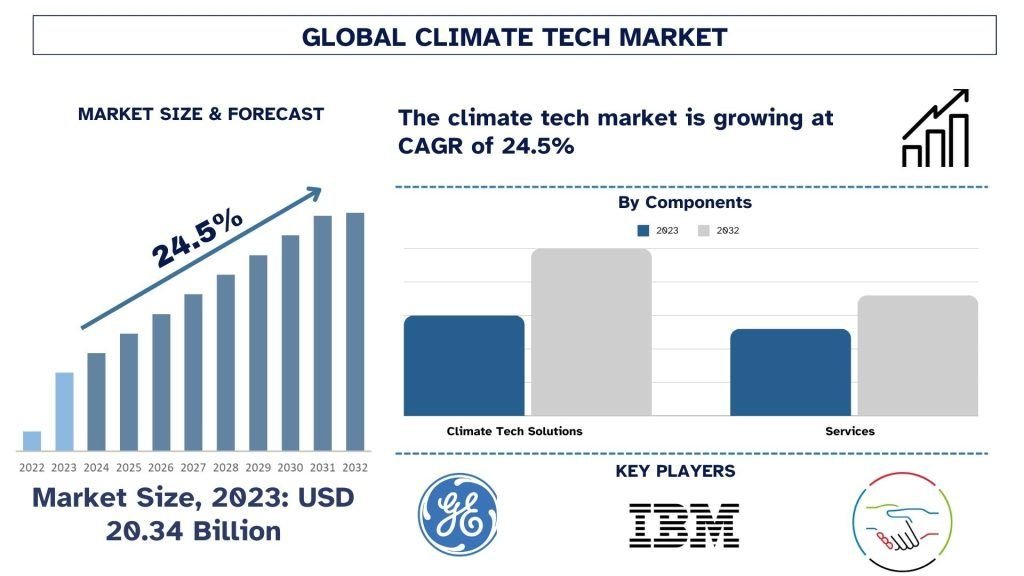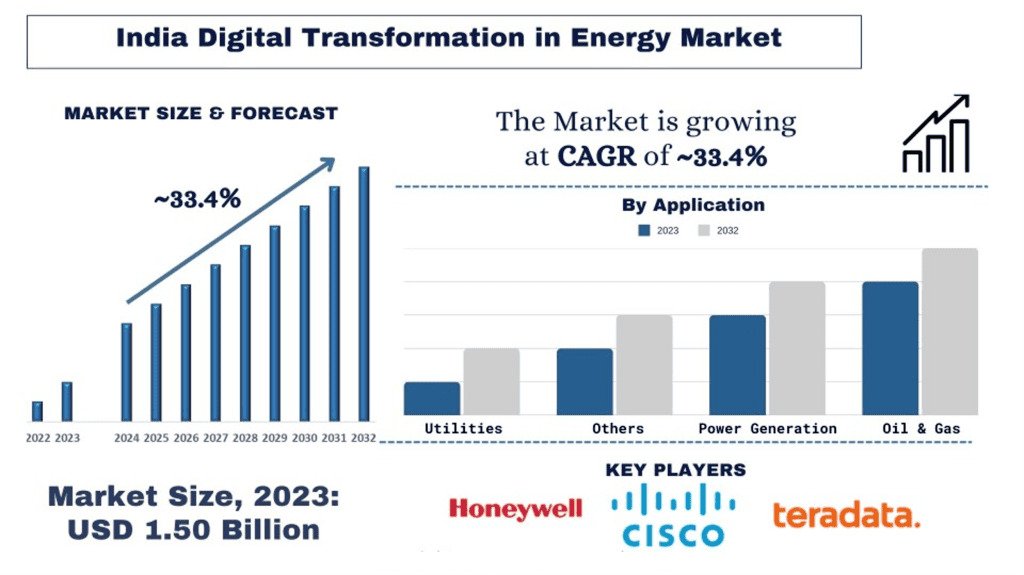Introduction
Digital transformation is redefining how businesses operate, interact with customers, and deliver value. In an era of rapid technological advancements, organizations must adopt digital-first strategies to stay competitive and future-proof their operations.
This blog explores the definition, key technologies, benefits, challenges, and future trends of digital transformation, providing insights into how companies can successfully navigate this shift.
Source: https://www.databridgemarketresearch.com/reports/global-digital-transformation-market
What is Digital Transformation?
Digital transformation refers to the integration of digital technologies into all aspects of business operations, leading to fundamental changes in how companies deliver products and services. It is not just about adopting new technology but also about cultural and organizational change that fosters innovation and efficiency.
Key Components of Digital Transformation:
- Cloud Computing – Enables scalable, on-demand access to computing resources.
- Big Data & Analytics – Helps businesses leverage data-driven insights.
- Artificial Intelligence (AI) & Machine Learning – Automates processes and enhances decision-making.
- Internet of Things (IoT) – Connects devices for real-time monitoring and automation.
- Cybersecurity – Protects data and digital assets from threats.
- Customer Experience (CX) Enhancement – Personalizes interactions through digital channels.
Why Digital Transformation Matters
1. Improved Efficiency & Productivity
Automating processes with AI and RPA (Robotic Process Automation) reduces manual effort, improves accuracy, and increases operational speed.
2. Enhanced Customer Experience
Personalization, chatbots, and omnichannel engagement improve customer satisfaction and loyalty.
3. Competitive Advantage
Companies that leverage digital technologies gain a strategic edge over traditional competitors.
4. Data-Driven Decision Making
Advanced analytics tools allow businesses to make informed, data-backed decisions.
5. Scalability & Agility
Cloud-based solutions and digital tools enable businesses to scale operations quickly and respond to market changes.
Challenges in Digital Transformation
1. Resistance to Change
Employees and stakeholders may be reluctant to adopt new technologies due to fear of disruption.
2. Cybersecurity Threats
Increased reliance on digital platforms exposes businesses to cyber threats and data breaches.
3. Integration Issues
Legacy systems may not be compatible with modern digital solutions, leading to implementation challenges.
4. High Implementation Costs
Digital transformation requires significant investment in technology, training, and infrastructure.
5. Data Privacy & Compliance
Organizations must adhere to regulations such as GDPR, CCPA, and HIPAA to ensure data protection.
Key Technologies Driving
1. Cloud Computing
Enables businesses to store, manage, and access data remotely, reducing infrastructure costs.
2. Artificial Intelligence & Machine Learning
Enhances automation, customer service, and predictive analytics.
3. Blockchain
Improves security, transparency, and traceability in transactions.
4. 5G & Edge Computing
Enhances connectivity, enabling real-time data processing and IoT expansion.
5. Augmented & Virtual Reality (AR/VR)
Transforms customer experiences in retail, healthcare, and education sectors.
Digital Transformation in Different Industries
1. Healthcare
- Telemedicine and remote patient monitoring improve accessibility.
- AI-driven diagnostics enhance accuracy and efficiency.
2. Finance
- Digital banking and mobile payments offer seamless financial transactions.
- AI-powered fraud detection ensures security.
3. Retail
- E-commerce, personalized recommendations, and chatbots enhance the shopping experience.
- Inventory management is optimized with IoT.
4. Manufacturing
- Smart factories leverage IoT, AI, and robotics for automation.
- Predictive maintenance reduces downtime and improves efficiency.
5. Education
- Online learning platforms and AI-driven tutoring personalize education.
- VR-based training enhances skill development.
Future Trends
1. Hyperautomation
Combining AI, RPA, and machine learning to automate complex business processes.
2. Metaverse & Extended Reality (XR)
Virtual and augmented experiences will redefine customer interactions and workplace collaboration.
3. Sustainable Technology
Green IT solutions and energy-efficient cloud computing will drive eco-friendly digital transformation.
4. Quantum Computing
Advanced computing power will revolutionize data processing, cybersecurity, and AI capabilities.
5. AI-Driven Decision Making
AI will play a larger role in predictive analytics and business strategy formulation.
Digital Transformation Market Analysis and Size
The digital transformation market is experiencing rapid growth, driven by increasing digitalization across industries and the adoption of advanced technologies such as cloud computing, big data analytics, artificial intelligence, and the Internet of Things. Companies increasingly invest in digital transformation initiatives to improve operational efficiency, enhance customer experiences, and drive innovation.
The global digital transformation market size was valued at USD 929.94 billion in 2023 and is projected to reach USD 5065.27 billion by 2031, with a CAGR of 23.60% during the forecast period of 2024 to 2031. In addition to the market insights such as market value, growth rate, market segments, geographical coverage, market players, and market scenario, the market report curated by the Data Bridge Market Research team includes in-depth expert analysis, import/export analysis, pricing analysis, production consumption analysis, and pestle analysis.
Conclusion
Digital transformation is no longer a choice but a necessity for businesses looking to thrive in the modern digital economy. By leveraging emerging technologies, improving operational efficiency, and enhancing customer experiences, organizations can stay ahead of the competition and build a future-proof business model.
However, successful digital transformation requires strategic planning, investment in technology, and a culture of continuous innovation. Companies that embrace this shift will not only survive but thrive in the ever-evolving digital landscape.












Leave a Reply